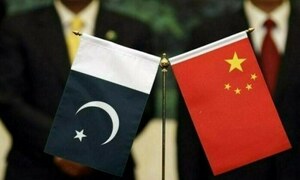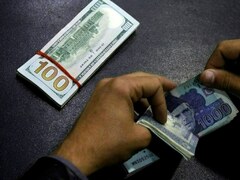Among all the natural and artificial fibres found in the world, cotton is perhaps the mostly human-friendly fibre which has been in its service since time immemorial and has the highest number of uses in all sectors of life such as personal, domestic commercial and industrial.
The most common and general forms of cotton are; seed-cotton, lint cotton, yarn, cloth and garments. Cotton's maximum use is in clothing including garments which is, after food, the second basic requirement of a human being. In old and the primitive days, only natural fibres such as cotton, wool, silk and flex were used in the preparation of garments depending on their availability and suitability of which cotton claimed the lion share. As a result of long research and experimentations, artificial fibre generally known as synthetic fibres were developed from petroleum-based chemicals or petrochemicals in the late nineteenth century which has an edge over natural fibres, such as cotton and wool in some properties like strength, shine, easy-handling, easy ironing and durability. Its use in garments welcomed by people and its garments gained popularity first among the rich class of people of the American and European countries, later it was shifted to poor class of the Asian and African continents on grounds of health hazards.
According to an ICAC report, the marketing of synthetic fibre/garments started in 1940 when the share of cotton in the total world fibre consumption was 75% which was reduced to 39% and that of man-made fibre increased to 58% in 2004. In Pakistan, only 16% man-made fibre is used for yarn manufacturing and about 84% cotton. It is a fact that we export large amounts of yarn, cloth and garments, mostly made of cotton but locally use garments largely made of man-made fibres. Pakistan in particular and other countries of South Asia in general largely import second-hand (worn) clothing from the US and the EU-27 countries, almost made of man-made fibre which facilitate poor people especially in the winter season.
This imported second-hand clothing in Pakistan may amount to about 20-25% of Pakistan's clothing per capita which is between 7.0 and 7.5 kg per year. According to an article published in Pak Tribune on 3rd March 2010, which said that the Pakistani textile industry has only 20% in the domestic market. The article wrote that in 2008-09, the Pakistan textile industry produced 3,040,910 tons of fibre of which 615,314 tons (20.23%) was consumed locally while the rest were exported.
The fibre consumption of Hong Kong and China in 2008 was 65.5% of the world fibre consumption while that of the South Asian countries 20.1%. As a matter of fact, garments made of pure cotton are very expensive and are generally used by rich western countries while the garments made of man-made fibre or of blended fibres, are used in comparatively poor countries of the Asian and African continents.
In the textile industry, various products have different amount of value addition and garments perhaps have the highest value addition and fetch the best per unit price. Suppose a certain amount of cotton costing Pak rupees 100 is converted into average quality garments it would fetch a price between Rs 600 and 800 while high quality garments between Rs 800-1000. Which means garments have a value addition of 6 to 10 times that of raw material cost. However, production cost may be between Rs 200 and 300.
Despite all the cost inputs, garment gives the best profits as compared to other textile products besides a host of contributory benefits. One report mentioned that in 1995 Bangladesh got one of the lowest unit price in garments around US $2.5 per square meter while Italy got the highest around US $13.0 per square meter.
The factors of the growth of the clothing sector are manifold such as increase in population, change in fashion, improved in living standard, increase in income, propensity to expand and change in lifestyle responsible for the growth of clothing sector. As such, the production, consumption and exports of clothing are increasing year on year. In Table 1 clothing export figures of some prominent countries are given, study of which would give an idea about the growth of the clothing industry in the 19 years period 1990-2009.
One can find Pakistan with the lowest growth of 12.18% while Bangladesh highest at 82.56%, other countries being China at 53.12%, India 18.56%, Turkey at 13.01%, Vietnam at 19.87% and Indonesia 13.62%. Pakistan's share of clothing exports in its own total export is 19% and in world clothing export around one percent only.
Bangladesh's share of clothing in its own total exports is over 70%. And that of China over 8%. One can easily conclude that Pakistan's clothing export performance cannot be considered satisfactory but highly unsatisfactory in comparison with other countries of the region despite the availability of the necessary infrastructure facilities, resources and opportunities.
=================================================
Table 1 Clothing Exports & Growth Percentage
=================================================
S.No Country 1990 2009 Yrly Growth
%age
=================================================
1 World 108.13 31.62 10.00
2 China 9.67 107.26 53.12
3 EU-27 56.24(2000) 96.80 3.80
4 India 2.53 11.45 18.56
5 Turkey 3.33 11.56 13.01
6 Bangladesh 0.643 10.73 82.56
7 Vietnam 1.82(2000) 8.69 19.87
8 Pakistan 1.014 3.36 12.18
9 Indonesia 1.65 5.92 13.62
=================================================
Source: WTO Pakistan has almost all the available resources for the manufacture and export of clothing/ready-made garments while some of the competing countries lack these resources. Pakistan has its own cotton crop sufficient to meet 80 to 90% of its cotton requirements and it imports high grade cotton including Extra Long Staple (ELS) to meet its requirements. Pakistan is surplus in yarn and in 2008-09 it exported 526,246 tons of yarn equal to 18.38% of its production. Pakistan has 20-22% yarn surplus to its requirements which is exported annually. Pakistan is also surplus in cloth production and in 2008-09 it exported about 20% of its production of 9,015.26 million sq. meters.
Other factors contributing to manufacturing and exports of clothing (garments) such as cheap labour especially women-labour (In Bangladesh over 85% of garment-labour consists of womenfolk especially from the rural areas), less capital-intensive, entrepreneurship and designers. New design and fashion centres, workers' training institutes and Research and Development (R&D) centres can be established to cater to the growing needs of ready-made garment industries. Thus, Pakistan has a comfortable edge over other garment exporting countries.
As regards opportunities for exporting clothing (garments), Pakistan is better placed than other clothing exporting countries as it has a shorter lead time for export to the EU-27, the US, the Middle East and African countries. Japan one of the largest buyer of clothing is also not difficult in reach. Table 2 gives detail of top ten clothing importing and exporting countries. Pakistan has the cheapest labour wages which go a long way in making clothing exports competitive as this industry is labour-intensive one.
The 2003 ILO report mentioned Per hour labour wages in US Dollars; Pakistan 0,23, Sri Lanka 0.37, India 0.71, China 0.86, Mexico 1.75, Hong Kong 5.13, Germany 10.03 and USA 11.36. This is a very important plus point which weighs much in calculation of clothing production cost. In industries which are labour-intensive, like garment, the wages of labour play a pivotal role but industries which are capital-intensive like automobiles and heavy machinery industries, financial costs play an important role in production costs.
Among Asian clothing exporting countries, Japan is on top at $25.0 billions in 2009, which may touch the level of $35.0 billions in 2011. Other prominent clothing importing countries are: Hong Kong (US $in billions) 15.51, Canada 7.56, Russian Federation 7.25, Switzerland, 5.24, Australia 4.06, Korea Rep. 3.38, and Saudi Arab 3.03. European Union-27, is the top one importer of clothing in the world and in 2009, its imports stood at US $160.11 billions. US is the second largest clothing importer and Japan occupies third position.
====================================================================
Table 2. Top Ten Clothing Exporting & Importing Countries
====================================================================
Clothing Exports 2007 Clothing Imports 2007
S.No Country Amount S No Country Amount
(Billion US$) (Billion US$)
====================================================================
1 China 115.24 1 USA 84.9
2 Hong Kong 28.76 2 Germany 29.7
3 Italy 22.77 3 Japan 24.0
4 Germany 16.02 4 UK 23.8
5 Turkey 14.00 5 France 20.9
6 France 10.65 6 Hong Kong 19.1
7 India 9.65 7 Italy 15.7
8 Belgium 8.34 8 Spain 13.0
9 Mexico 5.10 9 Belgium 8.60
10 USA 4.80 10 Netherland 8.10
11 World 345.30 11 World 351.95
====================================================================
Share of Top-ten countries 69.31% Share of top-ten countries 70.40%
Pakistan exports clothing mainly to the US and the EU countries. There are other clothing markets such as Japan, Middle East and South Africa. China has largely captured Japan's clothing market as Japan gets 85% of its clothing imports from China. Reportedly, Japan has planned to switch over its imports of cheap category clothing to Bangladesh or any other country of the region on price consideration.
The main importing countries of Pakistan textile and clothing are the US and the European Union. In 2007, the US and the EU jointly shared 85% of Pakistan's clothing and over 51% of textiles. Japan is the third largest clothing importer but Pakistan's share is less than 0.5% and in textile it is 0.9%. We have to work hard for increasing our export share of clothing in the US and the EU markets and take advantage of Japan, the UAE and South African markets where Pakistan should take all necessary measures to ensure a significant share in these markets.
Bangladesh has better handled marketing of garments. Reportedly, export orders of clothing worth millions of dollars meant for Pakistan, have been diverted to other countries like Bangladesh, India and Sri Lanka on fear of possible delay in shipments. Pakistan has already achieved significant success in export of denim products and we should try our best to increase its exports. Japan is taking much interest in the Bangladesh market and a few Japanese companies have already established their offices in Bangladesh and have entered with local counterparts for joint venture partnership in garments. What we really need is uninterrupted supply of power to the industries.
One Japanese company has reportedly placed a big order of two million t-shirts in Bangladesh. Going one step down, we should also explore Turkey, China and Hong Kong markets for supply of fabric for manufacturing of garments simultaneously, if our efforts to increase exports of garments do not meet our targets. The strength of our economy lies in the export of value-added products and garments are the best one.
The expansion of the garment industry horizontally and vertically can guarantee reduction in poverty as middle class and lower middle class people including women are the most desired garment factory workers. Of course, the present working conditions in commerce and industry are not conducive for the promotion of economy but we should try our best to get the maximum from the present and keep on struggling for a better future. Presently, we are running short of time and are left with limited options to gear up economic activities for its promotion and strength.























Comments
Comments are closed.